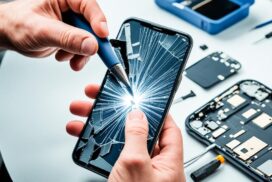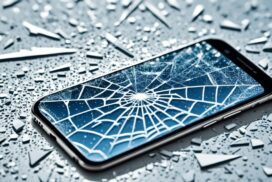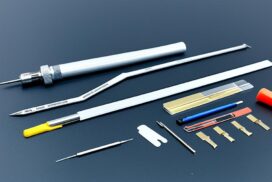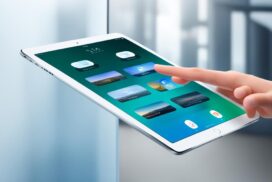Phone Battery Calibration: Enhancing Accuracy and Longevity
Calibrating your phone battery is essential for ensuring accurate battery readings and improving the overall lifespan of your device. Through the calibration process, you can address issues such as inaccurate battery percentages and sudden shutdowns. While the effectiveness of battery calibration may vary depending on factors like usage and battery degradation, it is a recommended practice for maintaining optimal battery performance.
When it comes to phone battery calibration, accuracy and longevity are key. By calibrating your phone’s battery, you can enhance the accuracy of battery readings, allowing you to have a clear understanding of your device’s charge level. This prevents any surprises or sudden shutdowns when you least expect them.
Moreover, battery calibration can also contribute to the longevity of your phone’s battery. While calibration itself does not directly extend the physical lifespan of the battery, it helps in maintaining optimal battery performance. By recalibrating the battery regularly, you can prevent excessive degradation and optimize its overall health.
Whether you use your phone extensively or sparingly, battery calibration is a valuable practice for every smartphone owner. It ensures that your device operates smoothly and provides accurate battery statistics, enabling you to make informed decisions about your power usage and charging habits.
Stay tuned to discover more about battery calibration, its importance, how to perform it, and the best practices to follow. Unlock the potential of your phone’s battery by taking control of its accuracy and longevity.
Understanding Battery Calibration and its Importance
Battery calibration is a crucial process that helps ensure accurate readings of a device’s battery charge level. Over time, batteries naturally degrade and lose their capacity, resulting in inaccurate battery percentage readings. By recalibrating the battery, the device can establish a new baseline for accurate measurements, preventing sudden shutdowns and poor battery performance.
Accurate battery readings are essential for effective power management and optimizing the overall performance of your device. When your device accurately reflects its battery’s charge level, you can make informed decisions about when to charge and how much battery life you have remaining.
Imagine relying on your phone’s battery percentage to guide you through a busy day, only to have it suddenly shut down before your tasks are complete due to inaccurate readings. This can be frustrating and inconvenient.
“Battery calibration helps prevent sudden shutdowns and ensures your device functions optimally.”
By understanding the importance of battery calibration, you can take proactive measures to maintain your device’s optimal battery performance and avoid unnecessary battery-related issues. Calibration also contributes to the longevity of your device’s battery by preventing overcharging or excessive discharge, both of which can degrade the battery over time.
To visualize the importance of battery calibration, let’s look at a hypothetical scenario:
| Scenario | Without Calibration | With Calibration |
|---|---|---|
| Battery Percentage | Inaccurate readings may result in sudden shutdowns or misleading battery life estimates. | Accurate battery readings allow for reliable usage and planning. |
| Battery Lifespan | Without calibration, the battery may degrade faster due to inconsistent charging and discharging patterns. | Calibration helps establish proper charging and discharging patterns, improving battery lifespan. |
| User Experience | Users may experience inconvenience and frustration due to unexpected shutdowns or unreliable battery life estimations. | Calibrated batteries provide peace of mind and a more predictable user experience. |
Understanding the importance of battery calibration empowers you to take control of your device’s battery performance. By regularly calibrating your battery, you can ensure accurate readings, prevent sudden shutdowns, and enjoy optimal battery longevity.
How to Calibrate Your Phone Battery
Calibrating your phone battery is a straightforward process that can be done with a few simple steps. By following this step-by-step guide, you can effectively calibrate your phone’s battery and improve its accuracy.
- Fully charge the battery: Start by connecting your phone to a charger and let it charge until the battery reaches 100%. This ensures that the battery is at its maximum capacity.
- Drain the battery completely: Once the battery is fully charged, disconnect the charger and use your phone normally until the battery is completely drained. You can do this by using power-intensive apps or continuously playing videos.
- Recharge the battery to 100%: Once the battery is drained, connect it to the charger and let it charge uninterrupted until it reaches 100%. Avoid using your phone while it’s charging to ensure a complete recharge.
Following these steps will help your phone establish a new baseline for accurate battery readings. It allows the battery monitoring system to recalibrate and provide more precise information about the battery’s remaining charge.
Remember, the exact calibration process may vary slightly depending on your device. Refer to your phone’s user manual or manufacturer’s website for specific instructions tailored to your device.
Calibrating your phone battery periodically, especially if you notice inaccurate battery readings or sudden shutdowns, can help maintain optimal battery performance and prolong the overall lifespan of your device.
Samsung Galaxy S21 Battery Calibration
| Device | Steps |
|---|---|
| Samsung Galaxy S21 |
|
For Samsung Galaxy S21 users, you can follow the steps outlined in the table to calibrate your battery. Adjustments may vary for different models, so consult your device’s manual for specific instructions.
Best Practices for Battery Calibration
To ensure successful battery calibration, it is important to follow some best practices. By adhering to these guidelines, you can optimize the calibration process for your phone battery, resulting in accurate readings and improved performance.
1. Fully Charge the Battery
Prior to starting the calibration process, make sure to fully charge your device’s battery to 100%. This ensures that you begin the calibration with a complete charge, setting a baseline for accurate readings.
2. Allow the Battery to Drain Completely
Once the battery is fully charged, allow it to drain completely before recharging. This step is crucial as it helps reset the battery’s internal circuitry and recalibrate the power level indicators.
3. Leave the Device Off for a Minimum of 5 Hours
After draining the battery, it is recommended to leave the device off for at least 5 hours. This resting period allows the battery to settle and ensures a more accurate calibration.
4. Perform Periodic Calibrations
To maintain accurate readings throughout the battery’s lifespan, it is advisable to periodically perform battery calibrations. Every 2-3 months is a suggested frequency, but you can adjust based on your usage habits and individual needs.
Note: It is essential to consult your device’s manufacturer guidelines as different devices may have specific instructions or optimal calibration patterns. Always refer to the manufacturer’s recommendations for the best results.
| Best Practices for Battery Calibration | |
|---|---|
| Fully charge the battery to 100% before calibration | |
| Allow the battery to drain completely before recharging | |
| Leave the device off for a minimum of 5 hours after draining | |
| Perform periodic calibrations every 2-3 months |
Paying attention to these best practices can help you achieve more accurate battery readings and prolong the overall lifespan of your device’s battery. Incorporate these guidelines into your battery maintenance routine to ensure optimal performance.
Frequency of Battery Calibration
When it comes to calibrating your phone’s battery, there is no strict rule on how often you should do it. However, for the most accurate battery statistics, it is generally recommended to calibrate your battery every two to three months. This frequency allows your device to establish a new baseline and provide more precise readings of its charge level.
Of course, the optimal timing for battery calibration may vary depending on individual preferences and usage habits. If you are diligent about keeping your battery charged and don’t mind slight inaccuracies in the percentage displayed, you can extend the intervals between calibration processes.
The decision on calibration frequency should be based on your specific needs and preferences. If you frequently utilize power-intensive applications or notice significant changes in your battery’s performance, more frequent calibrations may be necessary. On the other hand, if you are a light phone user and mainly rely on your device for basic tasks, you can opt to calibrate less frequently.
Ultimately, finding the right balance for battery calibration frequency will ensure that your phone provides accurate readings while maintaining optimal battery performance.
Benefits of Regular Calibration:
- Improved accuracy of battery statistics
- Prevention of sudden shutdowns at higher battery percentages
- Optimized power management
By following this recommended calibration frequency and taking into account your individual usage patterns, you will be able to maximize the accuracy and efficiency of your phone’s battery performance.
| Battery Calibration Frequency | Optimal Timing |
|---|---|
| Every two to three months | For the most accurate battery statistics |
| Varying intervals | Depending on individual preferences and usage habits |
The Relationship between Battery Calibration and Longevity
Battery calibration is often misconstrued as a method to prolong the overall lifespan of a battery. However, it is important to note that the primary purpose of calibration is to improve the accuracy of battery readings, rather than extending the battery’s physical lifespan. To maximize battery health and longevity, it is recommended to avoid deep discharges and charge the battery before it reaches 0%. These practices, combined with occasional calibration, can help maintain optimal battery performance over time.
Conclusion
Phone battery calibration plays a crucial role in improving the accuracy of battery readings and extending the overall lifespan of your device. By following the recommended steps and adhering to best practices, you can ensure that your phone’s battery provides precise charge percentages and avoids unexpected shutdowns. While calibration may not solve all battery-related issues, it remains a valuable practice for optimizing battery performance.
Incorporating regular battery calibration into your device maintenance routine is essential for maximizing battery life and enhancing power management. By calibrating your phone’s battery periodically, you can establish a new baseline for accurate measurements and prevent the device from prematurely shutting down due to battery exhaustion. This process helps you make the most out of your phone’s battery and ensures reliable performance throughout its lifespan.
Remember, battery calibration is just one aspect of overall battery health. To further enhance battery longevity, it is advisable to avoid deep discharges and to charge the battery before it reaches 0%. Combining these practices with periodic calibration can help you maintain optimal battery performance over time.
FAQ
Why is phone battery calibration important?
Phone battery calibration is important for ensuring accurate battery readings and improving the overall lifespan of your device.
What is battery calibration?
Battery calibration is the process of recalibrating a device’s battery to provide accurate readings of its charge level.
How do I calibrate my phone battery?
To calibrate your phone battery, fully charge it, drain it completely, and then charge it back up to 100% without interruption.
What are the best practices for battery calibration?
The best practices for battery calibration include fully charging the battery to 100% before starting the calibration process, allowing the battery to drain completely before recharging, and leaving the device off for a minimum of 5 hours after draining.
How often should I calibrate my phone’s battery?
It is generally recommended to calibrate your phone’s battery every two to three months for the most accurate battery statistics. However, the frequency can vary depending on individual preferences and usage habits.
Does battery calibration prolong the overall lifespan of the battery?
Battery calibration primarily focuses on improving the accuracy of battery readings, rather than extending the battery’s physical lifespan. To maximize battery health and longevity, it is recommended to avoid deep discharges and charge the battery before it reaches 0%.
What is the relationship between battery calibration and battery longevity?
Battery calibration can help maintain optimal battery performance over time when combined with other practices like avoiding deep discharges and charging before reaching 0%. However, it is important to note that calibration alone is not a guaranteed solution for all battery-related issues.












